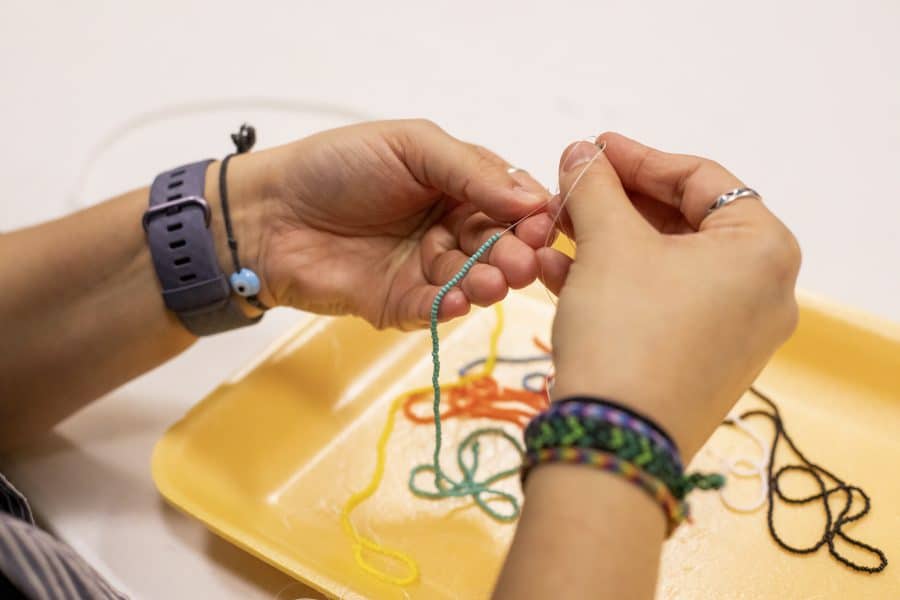By Marisa Mohi
The following is part of a series by CPN tribal member Marisa Mohi who is learning about the various ways Citizen Potawatomi can learn and connect with the Nation.
For some Citizen Potawatomi Nation members, it can feel like tradition is hard to access. If your family hasn’t attended Tribal events in the past, or if you live far from Oklahoma, it can feel like your history and culture are out of reach.
Luckily, the Citizen Potawatomi Nation Cultural Heritage Center has many programs and events that make learning about Tribal history much easier.
A few weeks ago, I attended a beading class at Citizen Potawatomi Nation’s Cultural Heritage Center. Just beyond the museum galleries sits a classroom full of supplies where Tribal members can learn some of the skills our ancestors honed long ago. Leslie Deer, the workshop instructor, selected a beading project and led the class on how to complete it.

For the particular class I attended, we learned to make a beaded wristlet keychain loop. However, there are classes on how to make everything from earrings to tobacco pouches.
Going in, I had little to no experience with beading. There was a time in elementary school where I had a craft container of beads, but I didn’t really do much with it. I wouldn’t consider myself very good at any kind of visual art, but beading is something I’ve always wanted to try. I knew that great beadwork takes a long time to learn, and like most things, years to perfect. Even so, the beading classes at the Cultural Heritage Center are incredibly accessible, even if you’re like me and have fat and clumsy fingers.
I won’t say that I’m an expert at beading. In fact, I’m quite bad. But that doesn’t really matter. Through the experience, I learned how to handle the tiny seed beads, how to hold the needle to work more quickly, and how to untangle the thread over and over again when I moved too fast or didn’t pay attention to the thread slack.
The act itself was incredibly meditative. Though the attendees chatted with each other, we all eventually got lost in the activity. Counting beads, stringing them on thread with the needle, wrapping the cord with the strand of beads to create the pattern — we slowly made our way through the project, learning to keep tension on the thread and how to fix the small mistakes that inevitably happen.
And for those who aren’t interested in beading, there are other events, like Winter Storytelling, an occasion for Tribal members to hear stories traditionally only told in the winter.
“We love the hospitality that you offer,” said Mable Kouteau Walton, a member of the Sac and Fox Nation who attended the event with three generations of her family. “We came to hear some of the older stories that we look forward to hearing.”
Held in the Long Room of the Cultural Heritage Center on Feb. 26, the Winter Storytelling event was led by Justin Neely, the Citizen Potawatomi Nation language director. The stories were also streamed online in the Potawatomi Language Facebook group.
The event itself was a mix of both traditional and modern. Traditional stories were told while Tribal members ate pizza. The event began with a prayer spoken in Potawatomi, then the Potawatomi Youth Choir sang John Lennon’s Imagine in Potawatomi.
“I really like that they have such talented people on staff,” said Pam Vrooman, a Citizen Potawatomi Nation member. “I loved the stop motion animation for how the bear lost his tail.”
For more information on Tribal and cultural events, check out the Cultural Heritage Center’s Facebook page.
Marisa Mohi is a member of the Nadeau family and is a freelance writer and media producer. You can follow her on Facebook or Twitter @themarisamohi. Her writing can be found at marisamohi.com.
